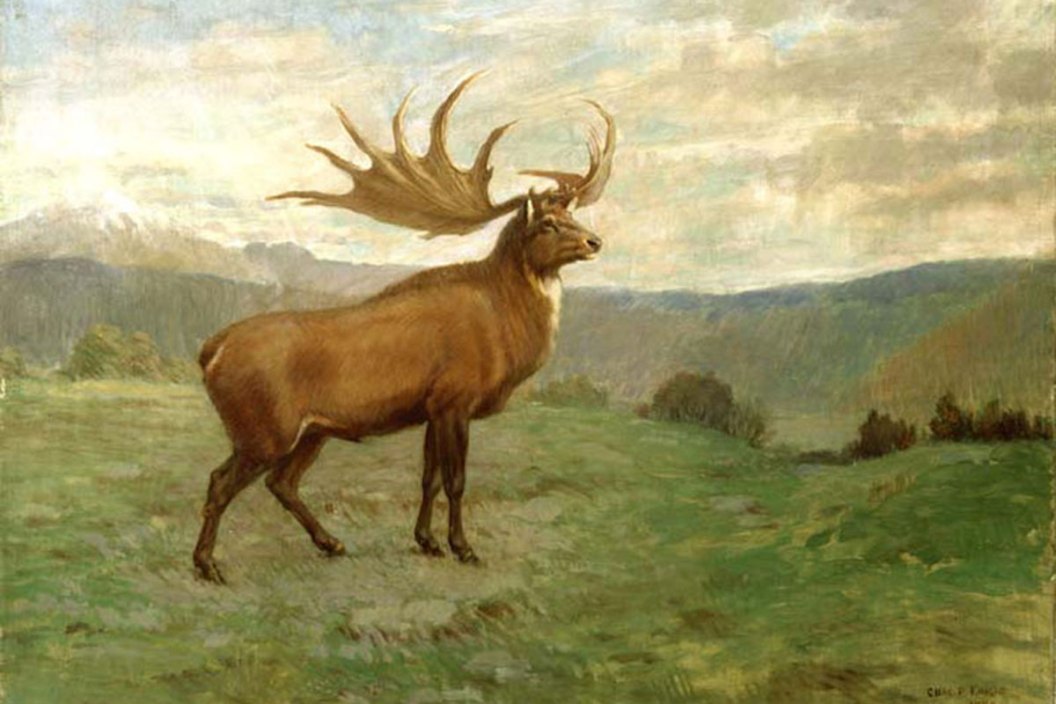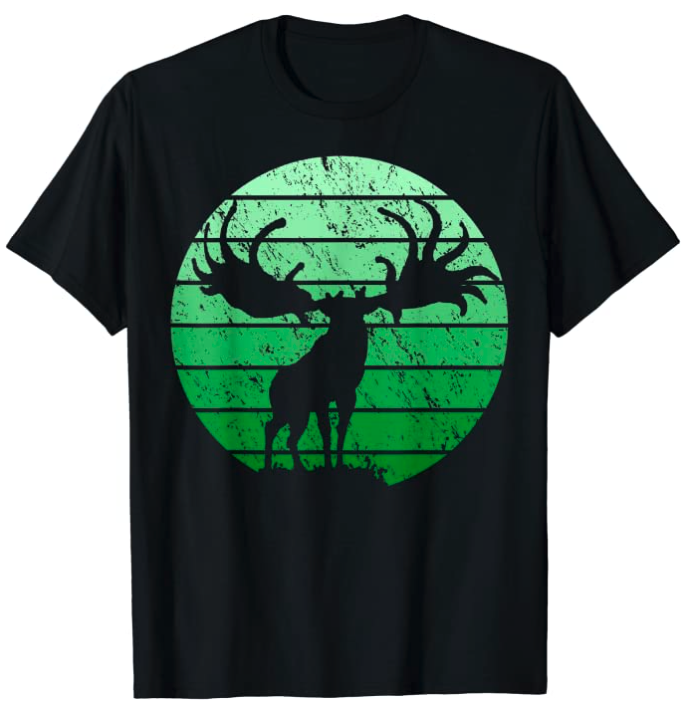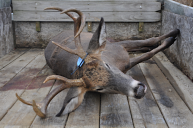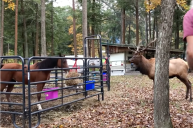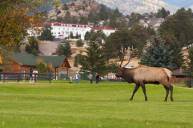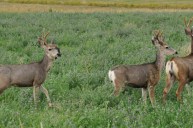We set out to explore the saga of the Irish elk, an animal that last lived more than 11,000 years ago and counting.
The extinct Irish elk, or Megaloceros giganteus, is a bit of a misnomer, since this creature was actually the largest animal that ever existed in the deer family (sorry, moose fans).
In fact, it is neither an elk nor is it strictly Irish, but according to UCMP Berkeley, "It ranged throughout Europe, northern Asia and northern Africa, and a related form is known from China. The name "Irish" has stuck because excellent, well-preserved fossils of the giant deer are especially common in lake sediments and peat bogs in Ireland."
Other than its body size and spectacularly large antlers, the Irish elk has become involved in evolutionary debates among paleontologists and other scientists through the years. It's remains have also adorned a fair amount of hunting lodges and castles from Ireland to Russia. It's even said that the Irish elk finally went extinct due to the fact that their antlers became so large that the animals could no longer hold up their heads, or got entangled in the trees.
One thing is for certain, the last of the Irish elk died out some 8,000 to 11,000 years ago.
As sportsmen and women, we've always been fascinated by these forever gone creatures as we wonder aloud what a hunt for such a beast would be like. It's certainly a giant of the long forgotten woods, and we should be glad we didn't try to chase without today's firearms and ammunition.
Let's take a closer look at this magnificent ancient animal to see where it came from, who hunted it, and what led to its extinction.
Irish Elk History
View this post on Instagram
The Irish elk is also known as the giant deer or Irish deer, and is an extinct species of the genus Megaloceros. They must have found an excellent home in Ireland since so many skeletons, skulls, and of course massive antlers have been found there, but remains have been discovered across their range.
Speaking of, the Irish elk had such a huge range, extending from the Atlantic Ocean in the West to Lake Baikal in the Russian frontier, that most scientific accounts refer to them as a very adaptable and versatile animal. They seem to have been acclimated to the boreal steppe-woodland environments, which consisted of scattered spruce and pine, but were most at home in low-lying areas of shrubs, especially grasses.
It is said that they may have a common heritage with fallow deer since they both have palmated antlers, but the Irish elk is much bigger and its giant antlers dwarf those of the fallow. Irish elk probably separated into the same bachelor groups that today's deer, elk, and moose do during the winter and spring months. These same individuals would come together with the rest of the population (herd) when the breeding season closed in.
Certainly stags or bulls would have fought for control of harems of females for breeding rights. Irish elk more than likely also shed their antlers in the winter after the rut, or mating season, considering that they would have needed a massive amount of energy and calcium to grow. The massive Irish elk antlers were thought to have been more for dominance of the herd, but just as important for display purposes when it came to enticing cows to mate with them. Those with smaller antlers got skipped over, and those with larger antlers were able to pass on their genes, much like the deer of today.
They were likely have been grazers, but would have chosen leaf browsing as well in the common soft wood willows and birch trees of the day.
Hunting the Irish Elk
https://www.instagram.com/p/CGV5I1GJyr9/
Though there's no real way to know for sure, differing opinions among the scientific community feel that the decline of optimal habitat after the previous Ice Age, as well as added pressure from hunting, caused this species to ultimately disappear.
As humanity expanded after the last Ice Age, they began to make good use of the many game animals that they found in their new environments. Neanderthals are known to have hunted wooly mammoths and mastodons, so it is very likely that they would have hunted and used the Irish Elk as food.
Some may think that these species were hunted to their extinction, but certainly there are more factors involved. Humans would have hunted them as well as they could have with the prehistoric tools of the day, but hunting on foot with spears was only so productive.
Humans as far back as 36,000 years ago began painting prehistoric animals on cave walls, and Megaloceros was among them. In fact, the famous Chauvet cave's Megaloceros Gallery features depictions of them among rhinos, bison, and horses.
Even as early Stone Age hunters were getting better and better, the Irish elk had plenty of other issues working against their longterm survival. Certainly neanderthals wouldn't have been privy to conservation methods and wildlife management techniques of today (it seems a bit comical to even mention it), but it still would have taken thousands of years for hunting to totally wipe them out.
The Last Word on the Irish Elk
The Irish elk was a creature of the late Pleistocene epoch that has captured the imagination of hunters the world over, ever since they first laid eyes on those huge antlers.
Georges Cuvier, a French naturalist and zoologist, sometimes referred to as the "Founding Father of Paleontology" was said to have "documented in 1812 that the Irish elk did not belong to any species of mammal currently living." That meant no modern hunter would ever have an opportunity to harvest an Irish elk, further adding to the intrigue.
The natural history of the largest deer ever has made it the stuff of legend. Even the biggest North American elk, or any male deer in the world, could only dream of the sort of antler growth Irish elk remains exhibit. We have to ask ourselves what we would do if a deer with an antler size like this were to ever show up in the woods in front of us during deer season.
They would outsize the largest antlers on your wall, that's for sure!
Looking for a little more or even hot lunch for your hunting blind? Follow my webpage, or on Facebook and Twitter.
NEXT: 5 MORE OF THE BIGGEST PUNISHMENTS EVER HANDED TO POACHERS
WATCH
